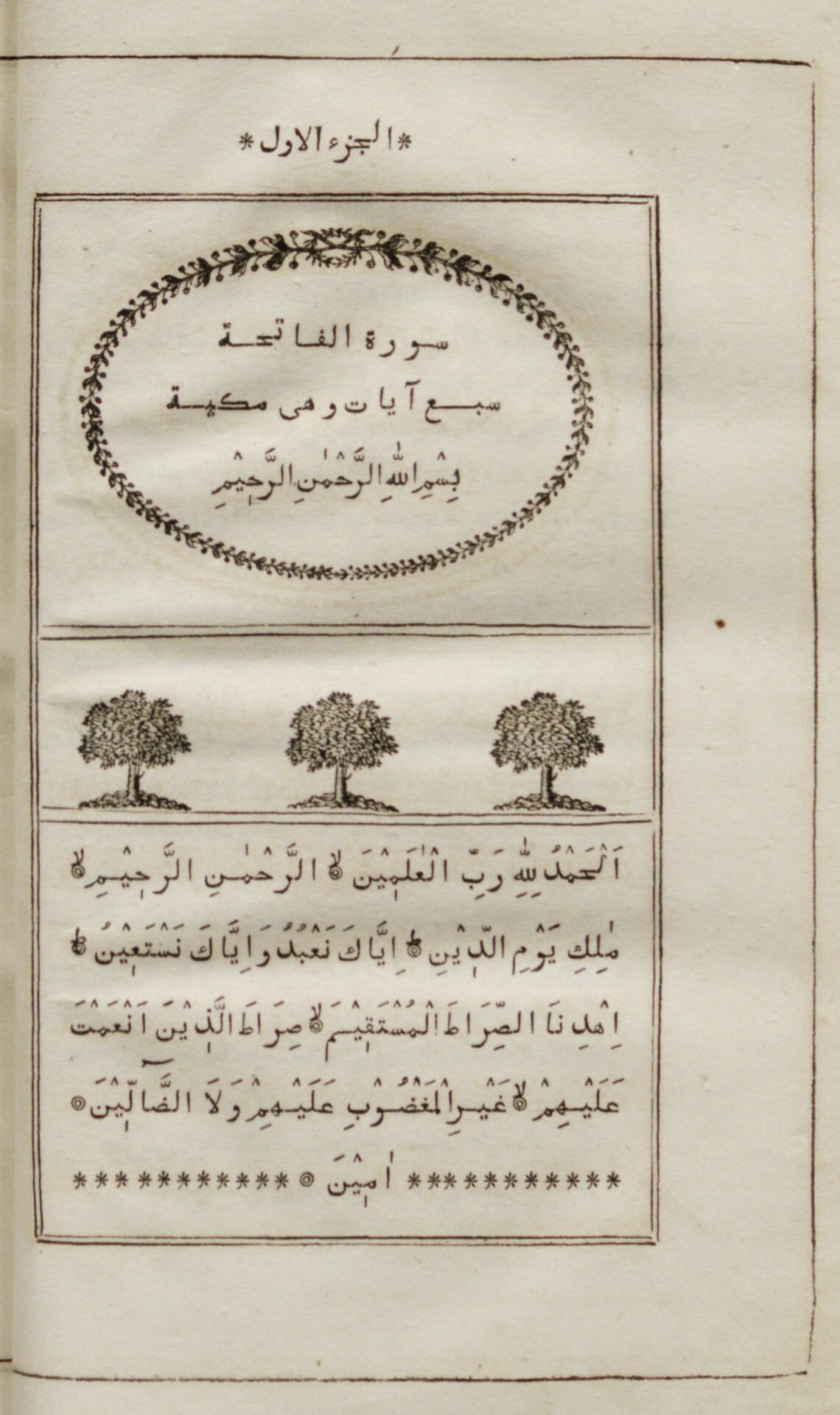One of the best things about being Product Editor on the Early Arabic Printed Books archive is being exposed to works that I have never encountered before. Having worked on rare book digitisation projects many times in the past, it’s a real treat to work on something so different, so challenging, and so beautiful. Below are some of the works that are particular highlights to me.

Many of the Qur’ans in this collection feature outstanding examples of calligraphy and geometric design. I could have selected any such Qur’an but this stood out in particular for its symmetry and the enormous level of detail in the border. Each flower, leaf and stem is beautifully drawn, the increasing level of detail drawing the eye to the central text, which reads “The Noble Qur’an”.
This work is a Qur’an in Arabic, with marginal notes and introductory tracts in Arabic and Persian. The marginal notes refer to pauses to be made whilst reciting the text, and on the orthography of the text. The introductory tracts describe the benefits of studying the Qur’an, as well as information on recitation and pronunciation.
![خلاصة مع شرح المير مع ترحمۀ فارسي وأفغاني [Khulaṣat Kaydānī], Kaydānī. Mumbai, 1886. Shelfmark 14519.e.41(3)](http://blog.gale.cengage.co.uk/wp-content/uploads/2015/12/EAPB-blog-image-2-642x1024.jpg)
This work is a treatise on prayer according to the Ḥanafī school, accompanied by Persian and Pushtu interlineary translations, with a commentary by Sayyid Sharīf al-Jurjānī, on the margin.

I selected this item for the opposite reason as the Delhi Qur’an above – its simplicity. Whilst still employing a floral theme, it is much less embellished than the work above. This is one of the earlier Arabic printed Qur’ans in the collection, and I hope that once this collection is used by scholars there will be some research into the development of Arabic printing of the Qur’an, as I’d love to know more about it.
This Qur’an contains a preface in Persian and an introductory treatise in Arabic by Muḥammad ʿAlī Khurāsānī, on the orthography of the text and the rules to be observed in reciting it.
Early Arabic Printed Books from the British Library is releasing tomorrow (18th December), if you would like to delve deeper into this content please get in touch and we’ll set you up with a free trial.
*Kindly note that our databases and digital archives are only available for institutions not individuals.

